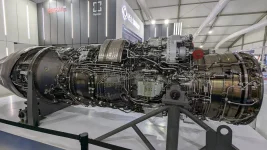- Views: 2K
- Replies: 11
S. Somanath, Chairman of the Indian Space Research Organisation (ISRO), has highlighted a critical gap in India's aerospace industry: the lack of adequate aerodynamic testing facilities.
Speaking at the SAROD 2024 event organized by the Vikram Sarabhai Space Centre (VSSC), Somanath emphasized the urgent need for significant investment to bolster India's capabilities in this crucial area.
Somanath revealed that India currently relies on foreign facilities for many essential aerodynamic tests, including jet simulations. This dependence has created a bottleneck for Indian aerospace development, particularly for projects under the Aeronautical Development Agency (ADA) and Hindustan Aeronautics Limited (HAL).
The ADA, responsible for developing advanced aircraft like the Tejas Mk1A, MkII, Twin Engine Deck Based Fighter (TEDBF), and the Advanced Medium Combat Aircraft (AMCA), has had to send wind tunnel models abroad for testing. While countries like France and Russia offer the necessary facilities, access is often limited and scheduling can be challenging.
Similarly, HAL's development of the Hindustan Lead-in Fighter Trainer (HLFT-42) has faced similar constraints, requiring international testing slots that are both expensive and time-consuming.
Somanath's call for investment is a strategic push towards self-reliance in aerospace engineering. He advocated for establishing facilities in India comparable to ONERA's large wind tunnel in France. Such a facility would not only cater to ISRO's needs but also support the broader aerospace industry, including critical defence projects.
While acknowledging the advancements in Computational Fluid Dynamics (CFD), Somanath emphasized that physical testing in wind tunnels remains indispensable. He stressed the importance of synergy between computational and physical testing for the accurate development of aerospace vehicles.
Developing domestic aerodynamic testing facilities offers several key benefits:
- Reduced reliance on foreign entities: This would enhance India's strategic autonomy and reduce reliance on other countries for critical testing.
- Faster development cycles: Access to domestic facilities would significantly reduce testing timelines, accelerating the development of aircraft like the Tejas, AMCA, and TEDBF.
- Cost savings: In the long run, domestic facilities could potentially lower testing costs compared to relying on foreign facilities.
- Technological advancement: Investing in advanced testing infrastructure would strengthen India's position in aerospace technology, fostering innovation and expertise.





